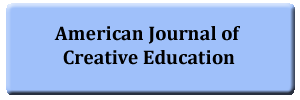Emerging facilitation methods: Identifying training needs among adult education facilitators in Oyo State, Nigeria
DOI:
https://doi.org/10.55284/ajel.v10i1.1461Keywords:
Adult learners, Emerging facilitation methods, Facilitators, Training needs, Oyo State, Nigeria.Abstract
The study aimed at examining the emerging facilitation methods by identifying the training needs among adult learners’ facilitators in Oyo State, Nigeria. Three specific objectives and research questions are achieved and answered, respectively. The study employed a descriptive research design. A purposive sampling technique was employed to select ninety-nine adult learners’ facilitators. A self-designed questionnaire, which was validated by experts, was used to obtain information from the respondents. A simple percentage was used to analyze the generated data. The empirical findings indicated that the sampled facilitators are aware of emerging facilitation methods, which include blended learning, gamification, micro-learning, virtual reality, augmented reality, adaptive learning, social learning, and personal learning networks. It revealed that the available emerging facilitation methods have helped facilitators to make learning more interactive, competitive, and enjoyable, as well as enabling them to connect and collaborate with individual learners beyond the facilitation venue. It also indicated the need for adult learners’ facilitators to learn the components of the emerging facilitation methods, master time management, and acquire digital skills, among others. The study concluded that awareness and utilization of emerging facilitation methods among adult learners’ facilitators will go a long way to revolutionize adult learning, fostering a more engaging, personalized, and collaborative learning environment.



